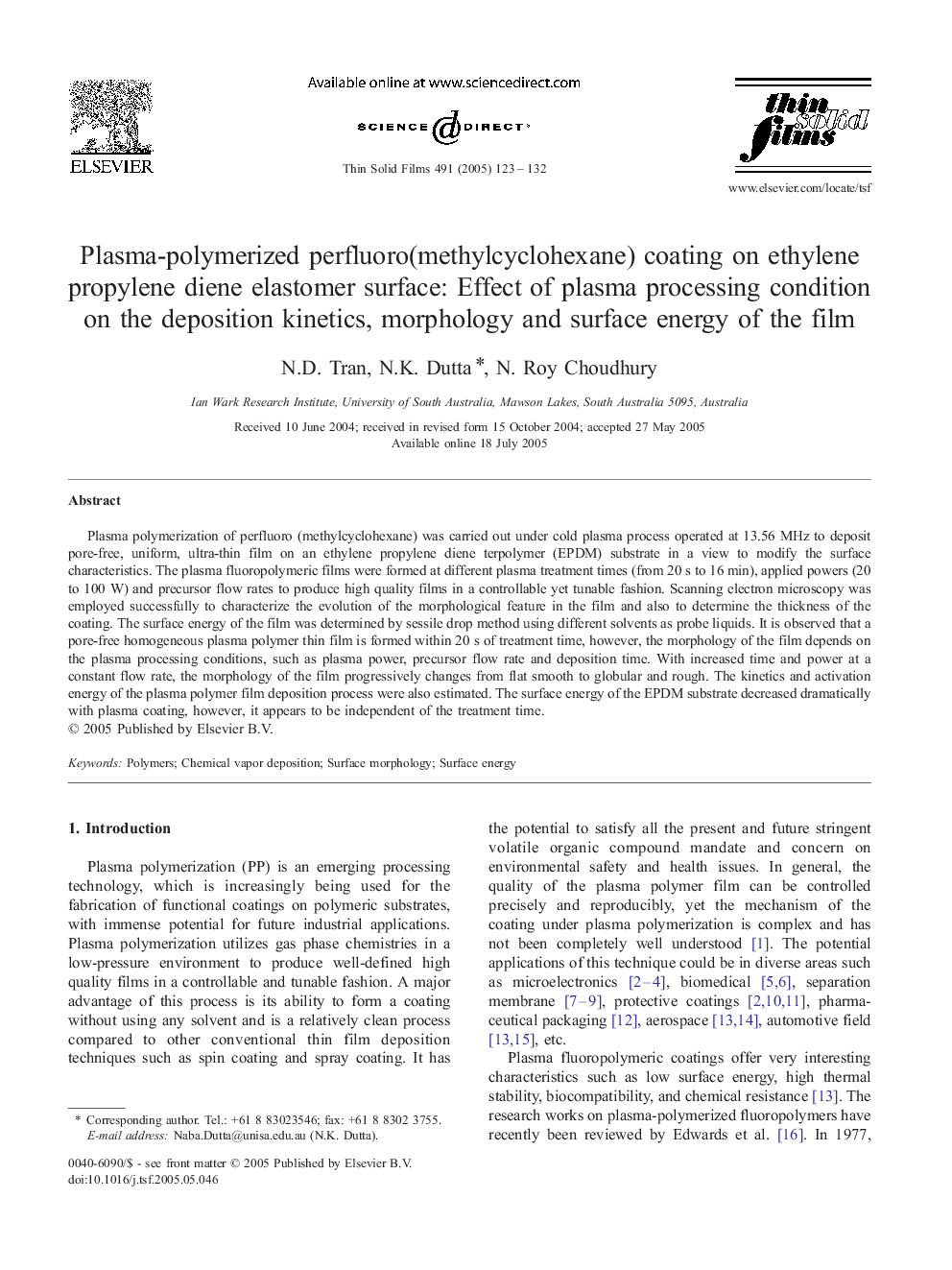| Article ID | Journal | Published Year | Pages | File Type |
|---|---|---|---|---|
| 9812183 | Thin Solid Films | 2005 | 10 Pages |
Abstract
Plasma polymerization of perfluoro (methylcyclohexane) was carried out under cold plasma process operated at 13.56 MHz to deposit pore-free, uniform, ultra-thin film on an ethylene propylene diene terpolymer (EPDM) substrate in a view to modify the surface characteristics. The plasma fluoropolymeric films were formed at different plasma treatment times (from 20 s to 16 min), applied powers (20 to 100 W) and precursor flow rates to produce high quality films in a controllable yet tunable fashion. Scanning electron microscopy was employed successfully to characterize the evolution of the morphological feature in the film and also to determine the thickness of the coating. The surface energy of the film was determined by sessile drop method using different solvents as probe liquids. It is observed that a pore-free homogeneous plasma polymer thin film is formed within 20 s of treatment time, however, the morphology of the film depends on the plasma processing conditions, such as plasma power, precursor flow rate and deposition time. With increased time and power at a constant flow rate, the morphology of the film progressively changes from flat smooth to globular and rough. The kinetics and activation energy of the plasma polymer film deposition process were also estimated. The surface energy of the EPDM substrate decreased dramatically with plasma coating, however, it appears to be independent of the treatment time.
Related Topics
Physical Sciences and Engineering
Materials Science
Nanotechnology
Authors
N.D. Tran, N.K. Dutta, N. Roy Choudhury,
